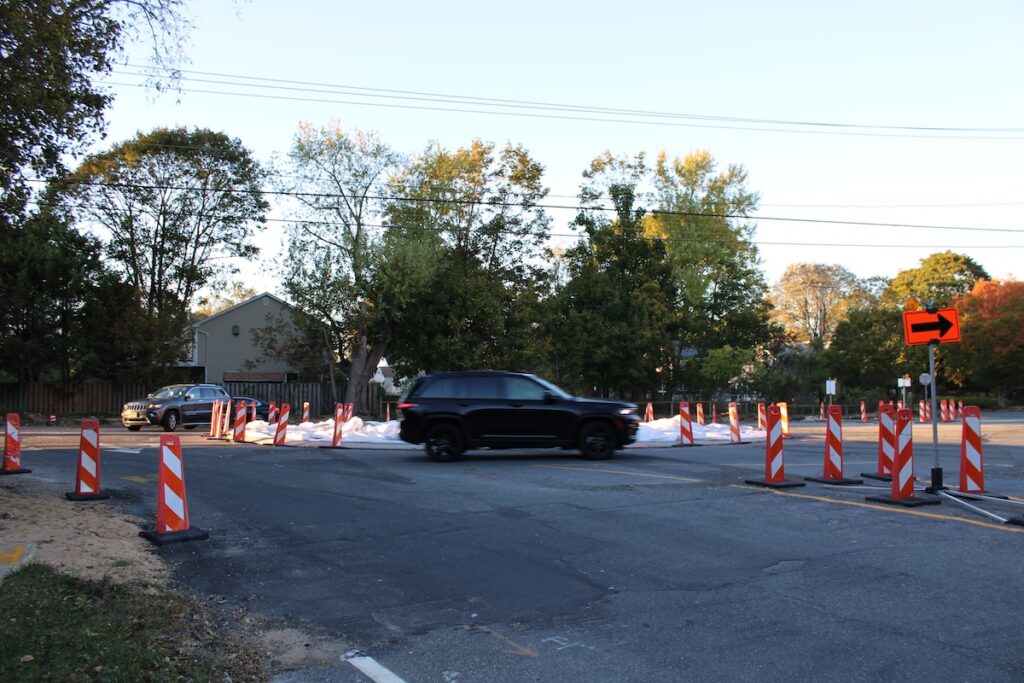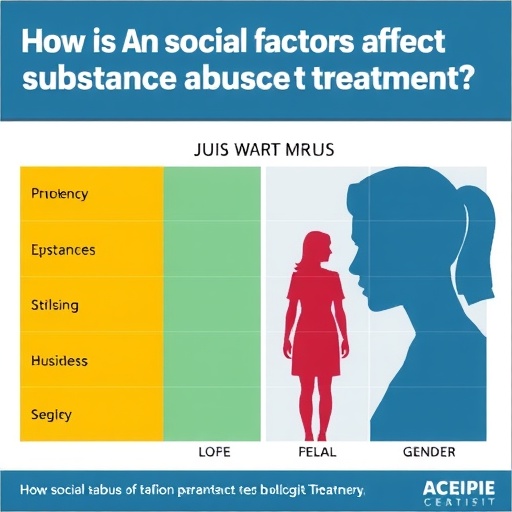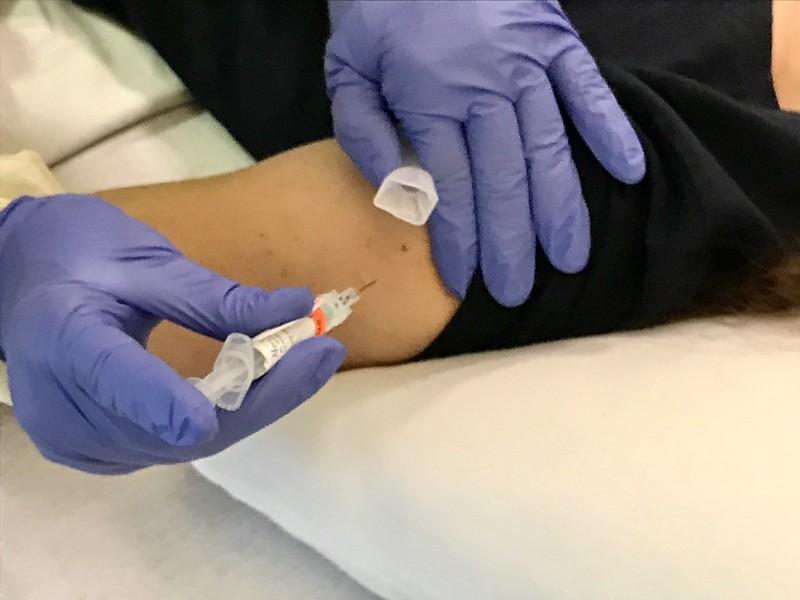Infrastructure Development Report: Greenport Traffic Circle Project and Sustainable Development Goals
1.0 Project Overview
A new traffic circle is under construction in Greenport at the intersection of State Route 25 and County Route 48. This initiative is a key component of a $10.9 million state infrastructure investment designed to enhance transportation safety and sustainability. The project directly addresses a historically hazardous intersection that recorded 15 traffic accidents over a four-year period, primarily due to failure-to-yield incidents.
2.0 Alignment with Sustainable Development Goals (SDGs)
The Greenport roundabout project is a strategic investment in sustainable infrastructure, contributing to several key United Nations Sustainable Development Goals (SDGs).
- SDG 3: Good Health and Well-being: The project’s primary objective is to improve road safety, directly supporting SDG Target 3.6, which aims to halve the number of global deaths and injuries from road traffic accidents. Modern roundabouts are a proven engineering solution for reducing the frequency and severity of collisions.
- SDG 9: Industry, Innovation, and Infrastructure: This development represents a significant investment in building resilient and sustainable infrastructure (SDG Target 9.1). By replacing a conventional intersection with a modern roundabout, the project utilizes innovative design to create a more durable and safer transportation asset for the community.
- SDG 11: Sustainable Cities and Communities: The initiative is a direct contribution to making transport systems safer and more sustainable, in line with SDG Target 11.2. By improving traffic flow and reducing vehicle idling compared to signalized intersections, the project also supports better local air quality and more efficient transit.
3.0 Implementation Status and Transitional Challenges
Construction on the roundabout commenced on September 22. The transitional phase has presented temporary challenges related to traffic management and public adaptation.
- Current Configuration: The partially completed structure utilizes temporary pylons to direct traffic, creating an unfamiliar pattern for drivers. This has led to confusion, particularly for non-local traffic.
- Reported Incidents: Two minor traffic accidents have been recorded since construction began. These incidents, which resulted in no serious injuries, involved vehicles failing to yield the right-of-way within the temporary traffic pattern.
- Official Assessment: Southold Police Chief Steve Grattan has stated that the current safety issues are a direct result of the incomplete nature of the construction zone and that safety will be significantly increased upon project completion.
4.0 Projected Outcomes and Long-Term Impact
The completed roundabout is projected to deliver substantial long-term benefits, aligning with established safety data and sustainable development principles.
4.1 Safety and Efficiency Improvements
- Data from the Insurance Institute for Highway Safety (IIHS) indicates that roundabouts reduce injury crashes by approximately 75% at intersections where stop signs or signals were previously used.
- Further studies by the IIHS and the Federal Highway Administration show that roundabouts typically achieve a 37% reduction in overall collisions and a 51% reduction in injury collisions.
- The design will facilitate a slower, more consistent flow of traffic, mitigating the risk of high-speed, right-angle collisions, thereby advancing the goals of SDG 3 and SDG 11.
4.2 Project Timeline
- Primary Construction: Major work, including concrete installation, permanent signage, and road re-striping, is expected to be finished by the end of the year.
- Final Work: Additional weather-dependent tasks are scheduled for completion in spring 2026.
Upon completion, the Greenport traffic circle will function as a critical piece of sustainable infrastructure that enhances public health and safety, contributing directly to the region’s sustainable development objectives.
Analysis of Sustainable Development Goals (SDGs) in the Article
1. Which SDGs are addressed or connected to the issues highlighted in the article?
-
SDG 3: Good Health and Well-being
The article directly addresses public health and safety by focusing on reducing road accidents. The primary purpose of the new roundabout is to “enhance safety” at an intersection that has seen 15 accidents in the last four years. The text cites studies from the Insurance Institute for Highway Safety and the Federal Highway Administration, which show that roundabouts significantly reduce injury crashes and overall collisions. This aligns with the goal of preventing injuries and promoting well-being.
-
SDG 9: Industry, Innovation, and Infrastructure
The construction of the traffic circle is presented as a “$10.9 million state infrastructure project.” This initiative is a clear example of investing in and upgrading infrastructure to improve its quality, reliability, and sustainability. The project aims to create a more resilient and safer road system, which is a core component of SDG 9.
-
SDG 11: Sustainable Cities and Communities
The article focuses on improving a specific transport intersection within the community of Greenport. The project’s goal is to make the road system safer and more efficient for all users, including local residents and visitors. By implementing a modern traffic solution designed to reduce accidents and slow traffic flow, the project contributes to creating a safer and more sustainable transport system for the community.
2. What specific targets under those SDGs can be identified based on the article’s content?
-
Target 3.6: Halve the number of global deaths and injuries from road traffic accidents.
The article’s central theme is the reduction of traffic accidents and related injuries. The project was initiated because the intersection had “seen 15 accidents in the past four years.” The article explicitly states that roundabouts are proven to achieve a “37% reduction in overall collisions and a 51% reduction in injury collisions,” directly linking the project’s objective to the goal of reducing road traffic injuries.
-
Target 9.1: Develop quality, reliable, sustainable and resilient infrastructure… to support economic development and human well-being.
The construction of the roundabout is a tangible action toward developing quality infrastructure. The article describes it as a state-funded project designed for long-term safety improvement. The statement that “Completing the construction is really what’s going to increase safety at that intersection” underscores the goal of creating reliable and resilient infrastructure to enhance human well-being.
-
Target 11.2: Provide access to safe, affordable, accessible and sustainable transport systems for all, improving road safety.
This project is a direct effort to improve road safety within a community’s transport system. The article highlights the confusion and danger at the intersection for both locals and visitors (“People approaching it who are not overly familiar… especially visitors racing to or from the Cross Sound Ferry terminal”). The new roundabout is intended to create a universally safer passage for all drivers, thus improving the local transport system as described in this target.
3. Are there any indicators mentioned or implied in the article that can be used to measure progress towards the identified targets?
-
Indicators for Target 3.6:
The article provides clear quantitative data that can be used as indicators.
- Baseline data: The intersection had “15 accidents in the past four years.” This serves as a baseline to measure future reductions.
- Post-construction data: The “two minor accidents already recorded since construction began” can be tracked over time to see if the rate decreases once the project is complete.
- Severity of accidents: The article notes “no serious injuries from either incident,” implying that the number of injury-related crashes is a key metric. The cited statistics (“reduced injury crashes by roughly 75%”) provide a benchmark for success. The official SDG indicator is 3.6.1 (Death rate due to road traffic injuries), and the data in the article (number of accidents, number of injuries) are direct measures related to it.
-
Indicators for Target 9.1:
- Financial Investment: The project is valued at “$10.9 million,” which serves as an indicator of government investment in improving infrastructure.
- Project Completion: The timeline mentioned (“expected to be complete by the end of the year, with some additional weather dependent work slated for spring 2026”) is an indicator of progress in infrastructure development.
-
Indicators for Target 11.2:
- Reduction in Collision Rates: The primary indicator for improved road safety is the change in the number of collisions at this specific intersection after the roundabout is fully operational. The article’s reference to a “37% reduction in overall collisions” in similar projects provides a specific, measurable target for this indicator.
4. Table of SDGs, Targets, and Indicators
| SDGs | Targets | Indicators (as mentioned or implied in the article) |
|---|---|---|
| SDG 3: Good Health and Well-being | 3.6: Halve the number of global deaths and injuries from road traffic accidents. |
|
| SDG 9: Industry, Innovation, and Infrastructure | 9.1: Develop quality, reliable, sustainable and resilient infrastructure. |
|
| SDG 11: Sustainable Cities and Communities | 11.2: Provide access to safe, affordable, accessible and sustainable transport systems for all, improving road safety. |
|
Source: suffolktimes.timesreview.com







